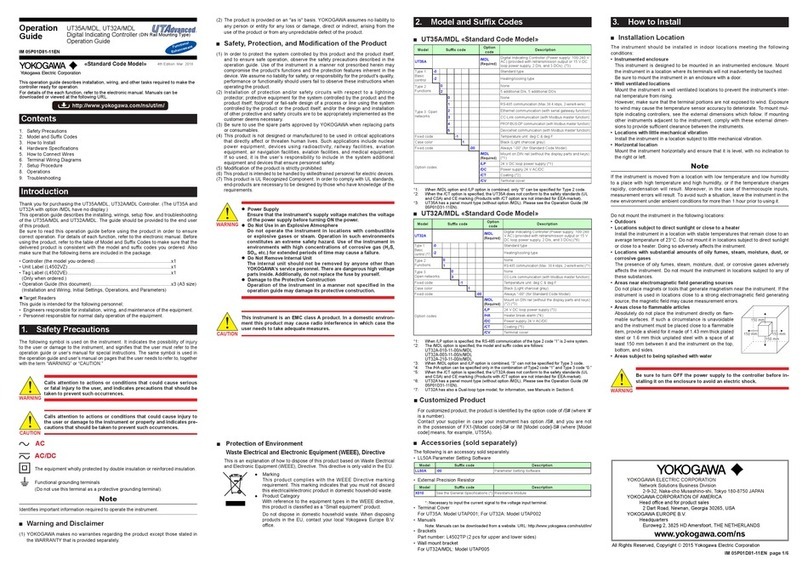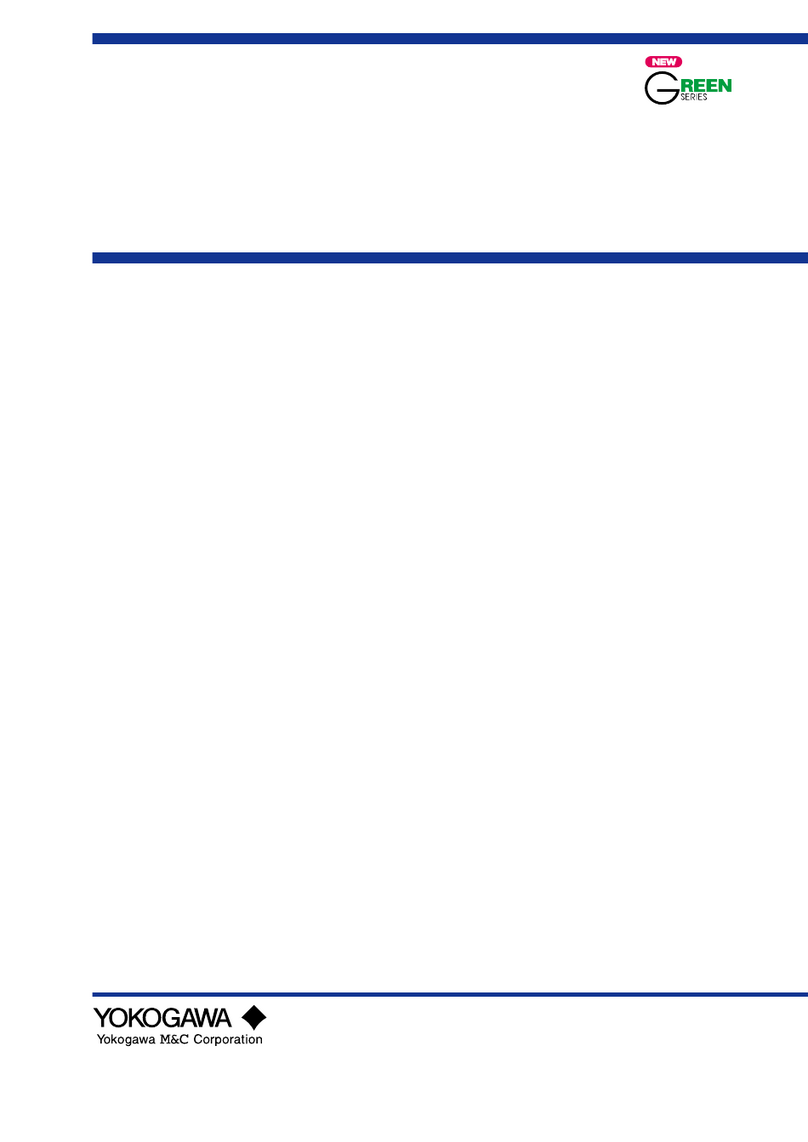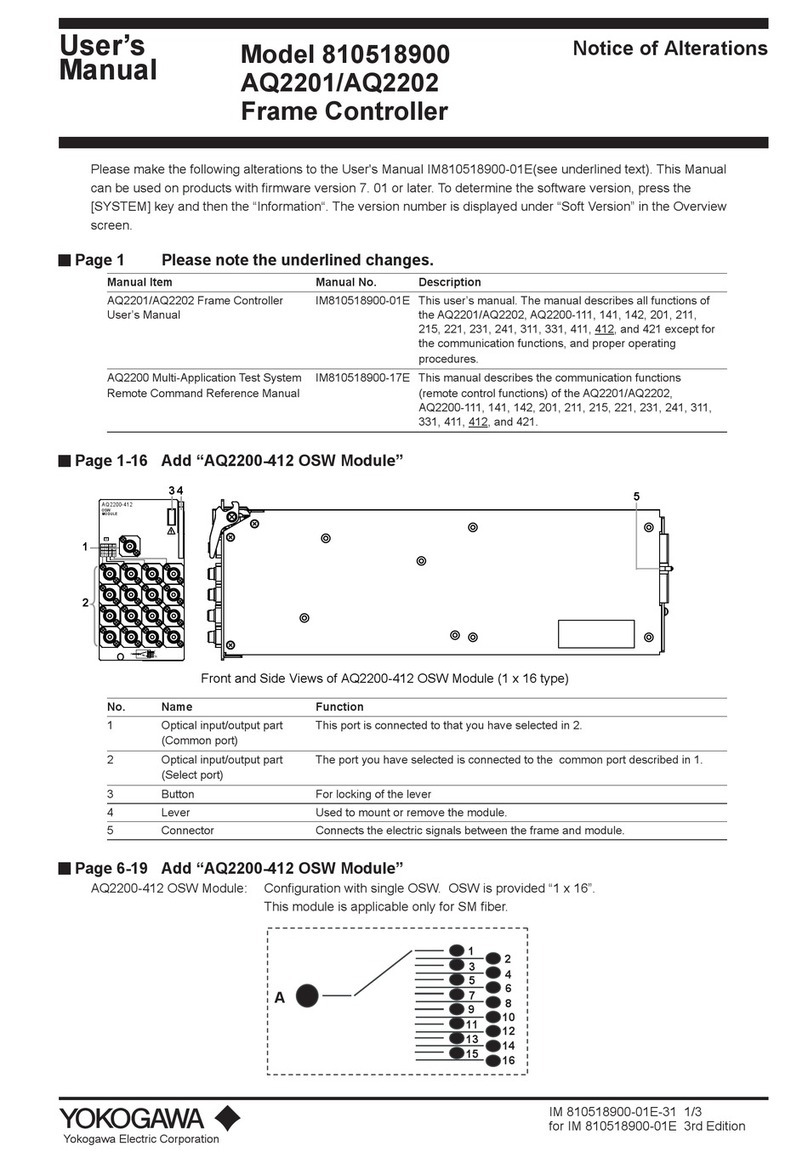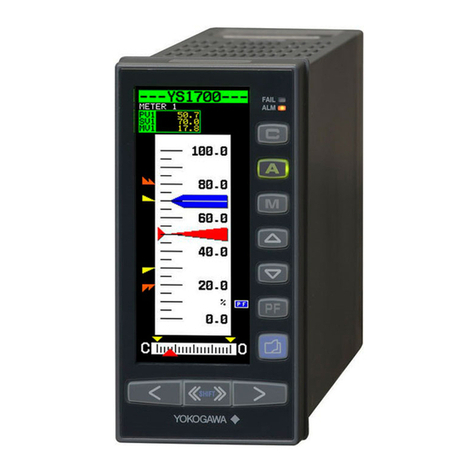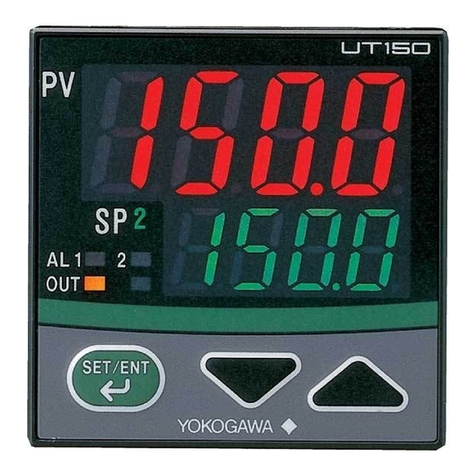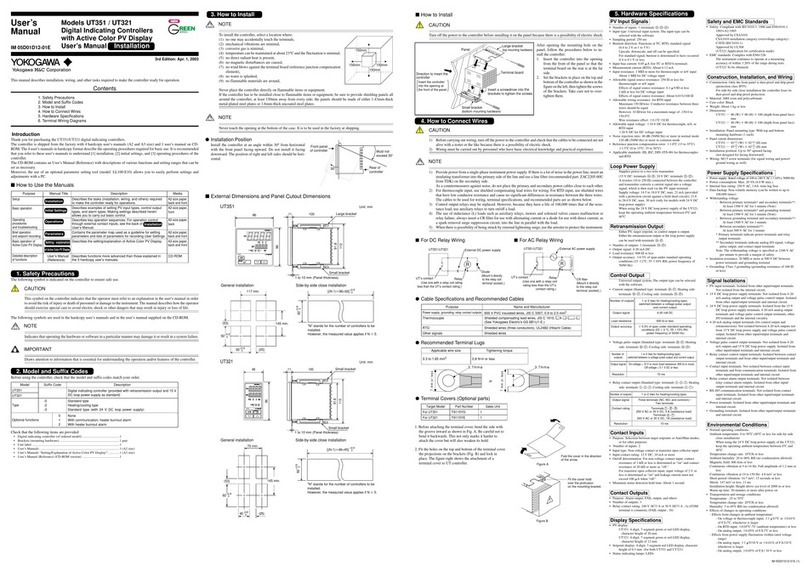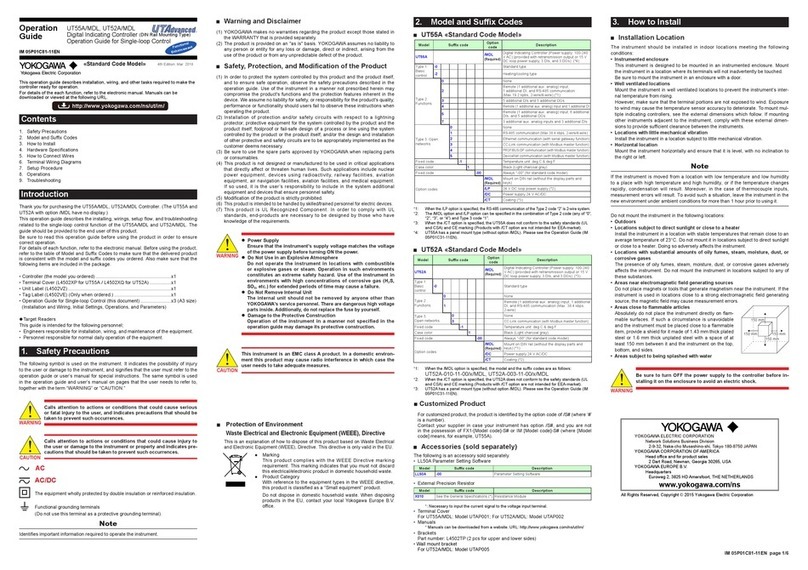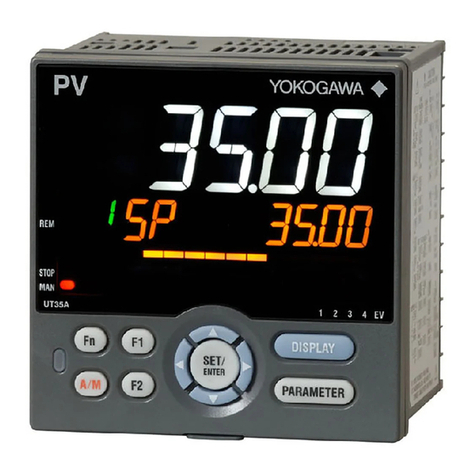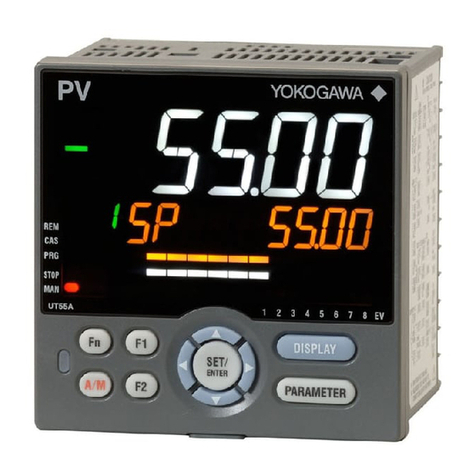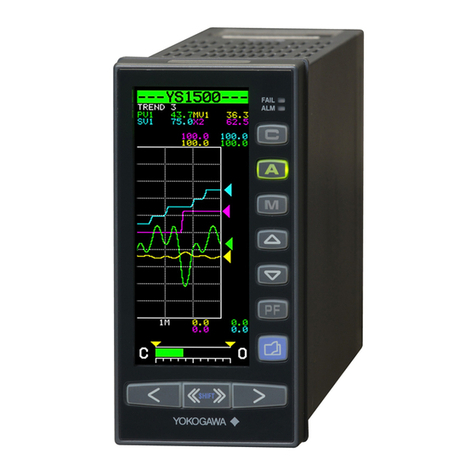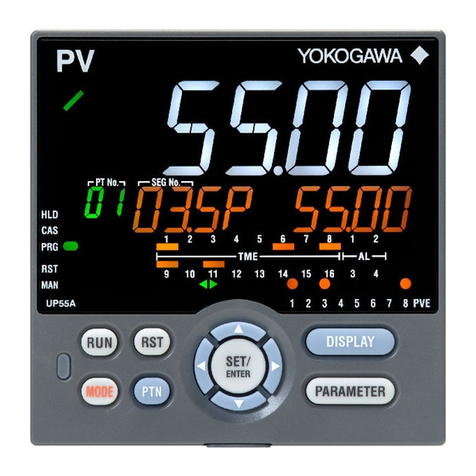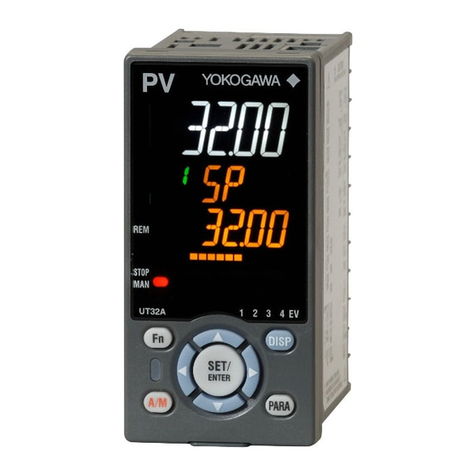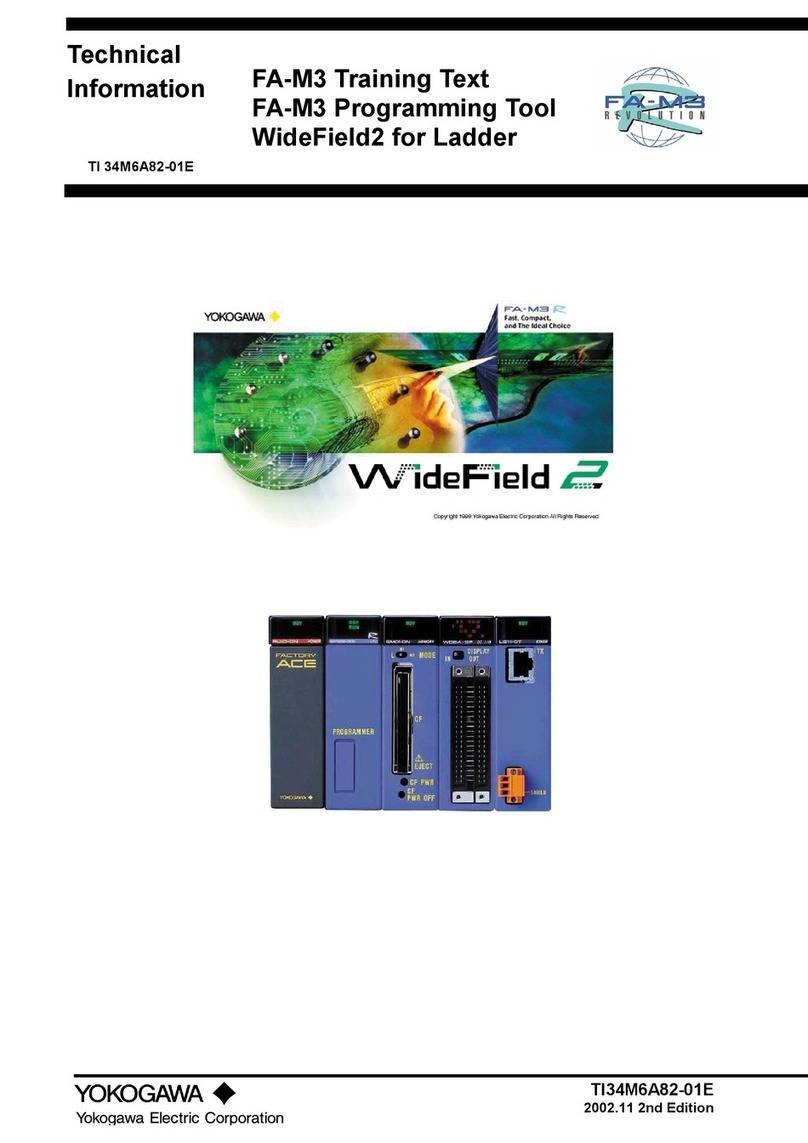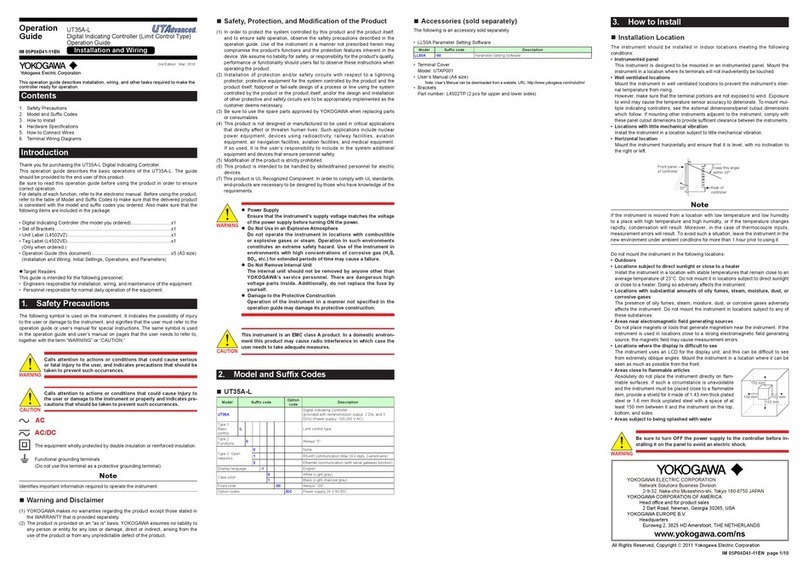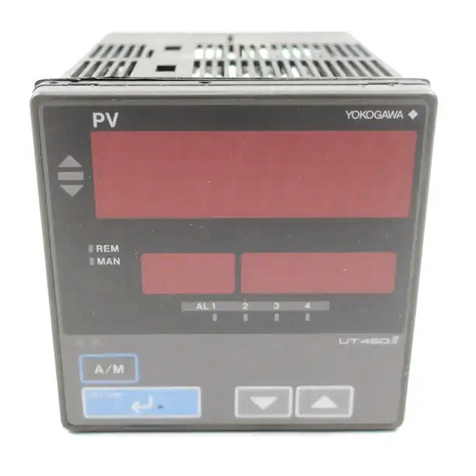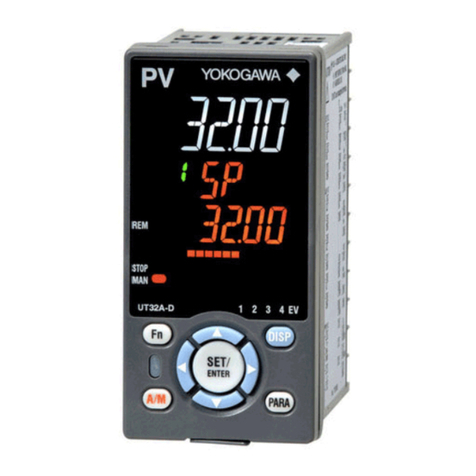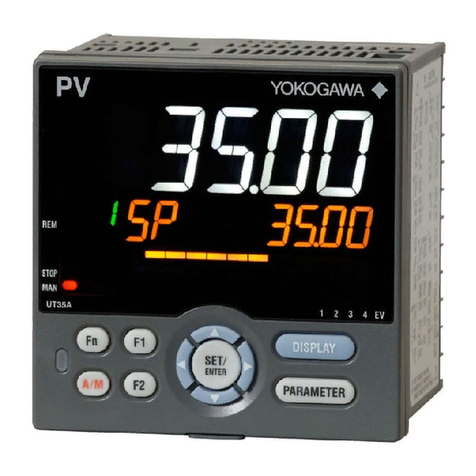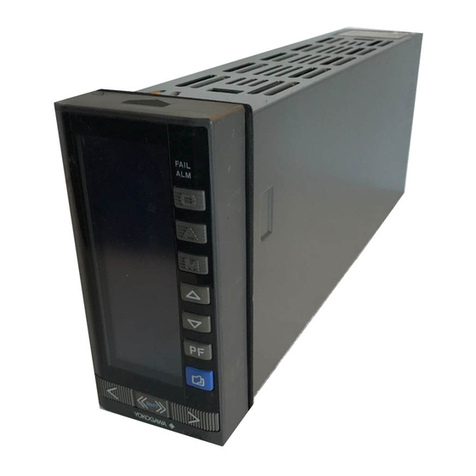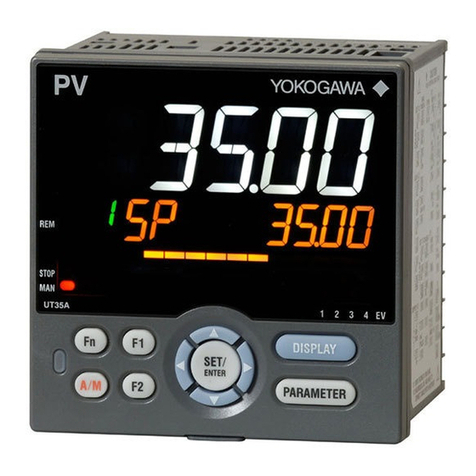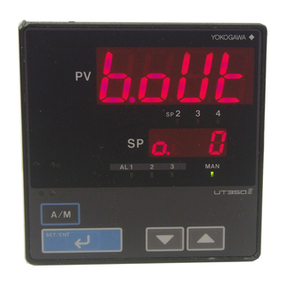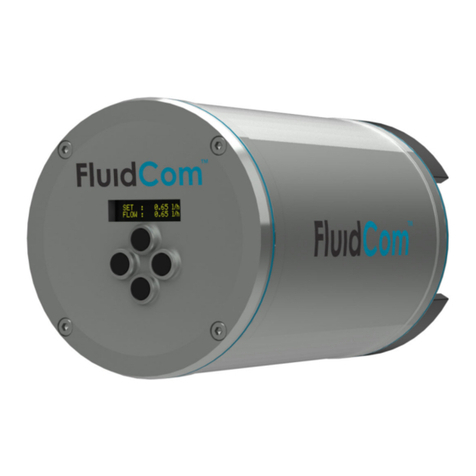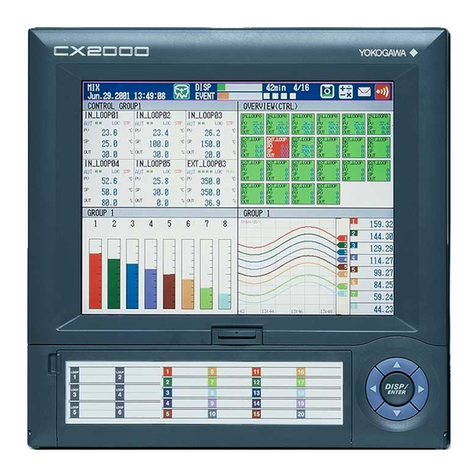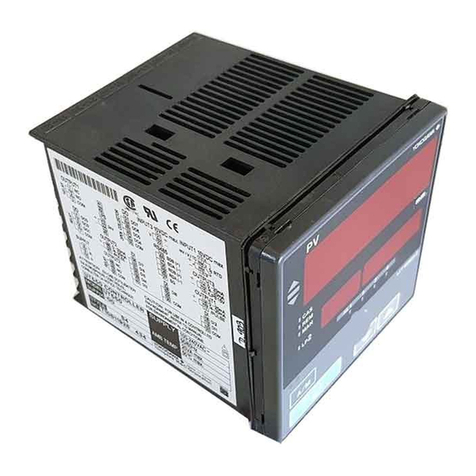
Yokogawa Electric Corporation - TC10-L - ENGINEERING MANUAL - PAG. 6
the lower display is showing its value, this key allows
to store the selected value for the current parameter
and access the next parameter within the same group.
Allows to increase the value of the selected parameter.
Allows to decrease the value of the selected parameter.
+ These two keys allow to return to the previous
group. Proceed as follows:
Push the button and maintaining the pressure,
then push the button; release both the buttons.
Note: The group selection is cyclic as well as the selection
of the parameters in a group.
5.6 FACTORY RESET - DEFAULT
PARAMETERS LOADING PROCEDURE
Sometime, e.g. when you re-configure an instrument
previously used for other works or from other people or when
you have made too many errors during configuration and
you decided to re-configure the instrument, it is possible to
restore the factory configuration.
This action allows to put the instrument in a defined
condition (the same it was at the first power ON).
The default data are those typical values loaded in the
instrument prior to ship it from factory.
To load the factory default parameter set, proceed as follows:
1. Press the button for more than 5 seconds. The upper
display will show PASS while the lower display shows 0;
2. Using and buttons set the value -481;
3. Push button;
4. The instrument will turn OFF all LEDs for a few seconds,
then the upper display will show dFLt (default) and then
all LEDs are turned ON for 2 seconds. At this point the
instrument restarts as for a new power ON.
The procedure is complete.
Note: The complete list of the default parameters is available
in Appendix A.
5.7 CONFIGURING ALL THE PARAMETERS
In the following pages we will describe all the parameters of
the instrument. However, the instrument will only show the
parameters applicable to its hardware options in accordance
with the specific instrument configuration (i.e. setting AL1t
[Alarm 1 type] to nonE [not used], all parameters related to
alarm 1 will be skipped).
]inP Group - Main and auxiliary input configuration
[1] SEnS - Input type
Available: Always.
Range: • When the code of the input type is equal to c
(see paragraph “How to order”).
J TC J (-50... +1000°C/-58... +1832°F);
crAL TC K (-50... +1370°C/-58... +2498°F);
S TC S (-50... 1760°C/-58... +3200°F);
r TC R (-50... +1760°C/-58... +3200°F);
t TC T (-70... +400°C/-94... +752°F);
n TC N (-50...1300°C/-58...2372°F);
Pt1 RTD Pt 100 (-200... 850°C/-328... 1562°F);
Pt10 RTD Pt 1000 (-200... 850°C/-328... 1562°F);
0.60 0... 60 mV linear;
12.60 12... 60 mV linear;
0.20 0... 20 mA linear;
4.20 4... 20 mA linear;
0.5 0... 5 V linear;
1.5 1... 5 V linear;
0.10 0... 10 V linear;
2.10 2... 10 V linear.
Notes: 1. When a TC input is selected and a decimal figure
is programmed (see the next parameter) the max.
displayed value becomes 999.9°C or 999.9°F.
2. Every change of the SEnS parameter will
produces a change of the related parameter and
in particular:
• [7] bS (PV bias) will be forced to zero
• [11] Ao1L and [12] Ao1H (when the analog
retransmission is present) will be forced to the
Ex.Range limits.
• [13] AL1 and [30] AL2 will be forced to :
–for an absolute maximum alarm, them will be
forced to the maximum input span
–for an absolute minimum alarm, them will be
forced to the minimum input span
–for all other alarm, them will be forced to zero
• [14] HAL1 and [31] HAL2 will be forced equal
to the 0.5% of the input span
• [28] AL2L extended limit low
• [29] AL2H extended limit high
• [35] HYS will be forced equal to 0.05 % of the
input span
• [37] SPLL and [38] SPHL
• [39] SP
• the CAL group will be reset [51]A.L.P, [52]
A.L.O, [53] A.H.P, [54] A.H.O
[2] dP - Decimal point position
Available: Always.
Range: 0 to 3 when [1] SenS = Linear input;
0 or 1 when [1] SenS different from linear input.
Note: Every change of the dP parameter setting will produce
a change of the parameters related with it (e.g.: set
points, proportional band, etc.).
[3] SSc - Initial scale read-out for linear inputs
Available: When a linear input is selected by [1] SenS.
Range: -1999 to 9999.
Notes: 1. SSc allows the scaling of the analog input to set
the minimum displayed/measured value.
The instrument will show a measured value up to
5% less than SSc value and then it will show an
underrange error.
2. It is possible to set a initial scale read-out higher
than the full scale read-out in order to obtain a
reverse read-out scaling.
E.g.:
0 mA = 0 mBar and 20 mA = -1000 mBar (vacuum).
[4] FSc - Full scale read-out for linear input
Available: When a linear input is selected by [1] SenS.
Range: -1999 to 9999.
Notes: 1. Fsc allows the scaling of the analog input to set
the maximum displayed/measured value.
The instrument will show a measured value up to
5% higher than [4] FSc value and then it will show
